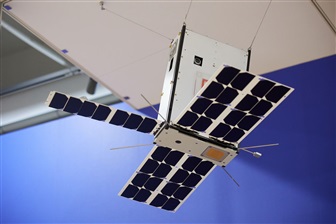Around the web
31 Jul 200730 Jul 200726 Jul 2007
The Inquirer
The Globe and Mail
The Financial Times
Panasonic recently announced its new HDC-SD5 and HDC-SX5 high-definition camcorders.
CNNMoney
Sharp said fuller details will be announced later Tuesday.
Sydney Morning Herald
Sony has launched an international campaign to improve TV products and services for blind and partially sighted people.
Vnunet.com
DowJones (via CNNMoney.com)
BT is shutting down its Movio mobile television company and ending its partnership with Virgin Mobile's DAB TV service, which will also close. However, BT suggested that it may launch a service using the competing DVB-H format in the future, depending on market conditions.
Vnunet.com
Certainly, plenty of people in the industry are not convinced that EUV lithography is the right way to go. They are latching on to double patterning as a way to get them to 32 nm (since there's little doubt that EUV won't be the answer at that node, anyway). EUV has become an Intel-led political battle, with many employees jumping ship because of it — whether immersing themselves in Sematech activities or full-out quitting their current companies, they are finding ways to get away from the EUV development work.
Semiconductor International
27 Jul 2007
The Economic Times
The Inquirer
Despite a first-quarter profit gain, the company's long-term outlook for plasma TVs is threatened by the rival LCD flat-screen technology
Business Week
Company release
Company release
Company release
One key question is how much consumers will be willing to spend on mobile TV. While some users may spend US$4 or US$5 a month to download clips to their cell phones, the more robust mobile TV services with live channels are typically priced at US$10 to US$20 a month. Kanishka Agarwal, an analyst at Telephia, estimates that mobile TV revenues totaled US$146 million in the first quarter, approaching the US$168 million generated by mobile video games. "The mobile video business is catching up to businesses that have been around a while," he said.
Business Week
MotionDSP announced this week that the CIA's investment arm, In-Q-Tel, had provided MotionDSP with its first bit of outside funding - an investment of less than a million dollars. The CIA also committed to more than a million dollars in contracts for the firm's technology, which can take grainy or blurry video footage and make it clearer. The company is hoping the CIA deal will help his firm cash in on a burgeoning area: the sharing of images and video over cell phones.
Red Herring
747/1505 pages









